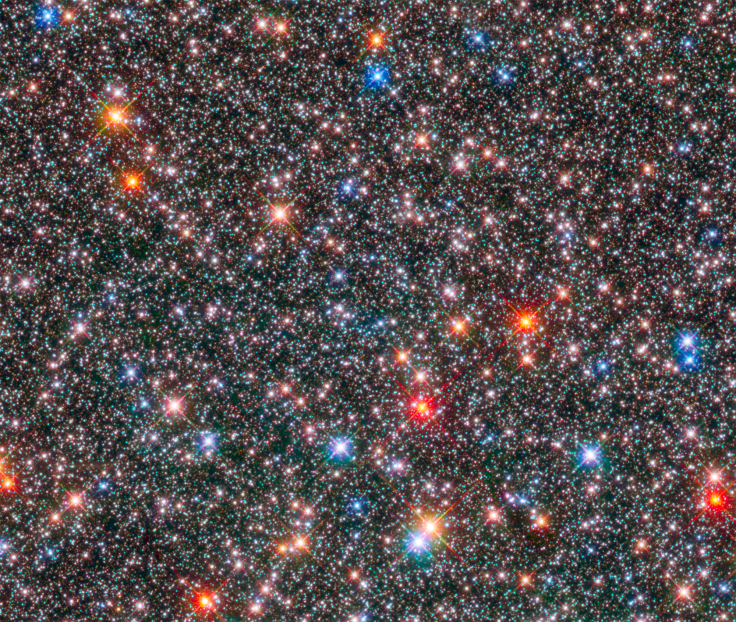Milky Way Center Bulge Is Home To Stars Of Different Ages, Speeds

Our home galaxy, the Milky Way, is a spiral-shaped galaxy that thins out from the center to its arms. While our solar system is located close to the outer edges of the galaxy, it is the galactic center — called the bulge, given its thickness if the galaxy were viewed from the side — where the majority of the galaxy’s stars reside.
Astronomers had long thought the stars in the inner regions of the Milky Way are the oldest and earliest stellar members of the galaxy. But verifying that assumption was difficult, given how crowded the region is, which makes it difficult to examine individual star motions in detail. New analysis of data from NASA’s Hubble Space Telescope gets around that problem, however, and showed that assumption to be wrong.
Using nine years of archival data from Hubble, that included “about 10,000 normal sun-like stars in the bulge,” a team led by Will Clarkson of the University of Michigan-Dearborn found that far from being a homogenous sort of place, the galactic center “is a dynamic environment of stars of various ages zipping around at different speeds, like travelers bustling about a busy airport.”
Clarkson and his colleagues found the stars’ motion is dependent on their chemical compositions. Stars that are relatively rich in heavy elements (anything beyond hydrogen and helium, the first two elements of the periodic table, are called heavy in astronomy) have more orderly motions, but they also orbit the galactic center faster than older stars that have lost most of their heavy elements.
“By analyzing nine years’ worth of data in the archive and improving our analysis techniques, we have made a clear, robust detection of the differences in the motion for chemically deficient and chemically enriched Sun-like stars. We hope to continue our analysis, which will allow us to make a three-dimensional chart of the rich chemical and dynamical complexity of the populations in the bulge,” Clarkson said in a statement Thursday.
Researchers said the study may help provide a better understanding of the evolution of the Milky Way.
“There are many theories describing the formation of our galaxy and central bulge. Some say the bulge formed when the galaxy first formed about 13 billion years ago. In this case, all bulge stars should be old and share a similar motion. But others think the bulge formed later in the galaxy’s lifetime, slowly evolving after the first generations of stars were born. In this scenario, some of the stars in the bulge might be younger, with their chemical composition enriched in heavier elements expelled from the death of previous generations of stars, and they should show a different motion compared to the older stars. The stars in our study are showing characteristics of both models. Therefore, this analysis can help us in understanding the bulge’s origin,” Annalisa Calamida of the Space Telescope Science Institute, Baltimore, Maryland, who was part of the research team, explained.
The center of the Milky Way is about 26,000 light-years away and the width of the bulge, roughly 10,000 light-years, is approximately one-tenth of the galaxy’s diameter.
The findings were presented Thursday at the ongoing 231st meeting of the American Astronomical Society in Washington, D.C. A paper on the subject, titled “Chemically-dissected rotation curves of the galactic bulge from main sequence proper motions,” was published in the Astrophysical Journal.
© Copyright IBTimes 2025. All rights reserved.




















